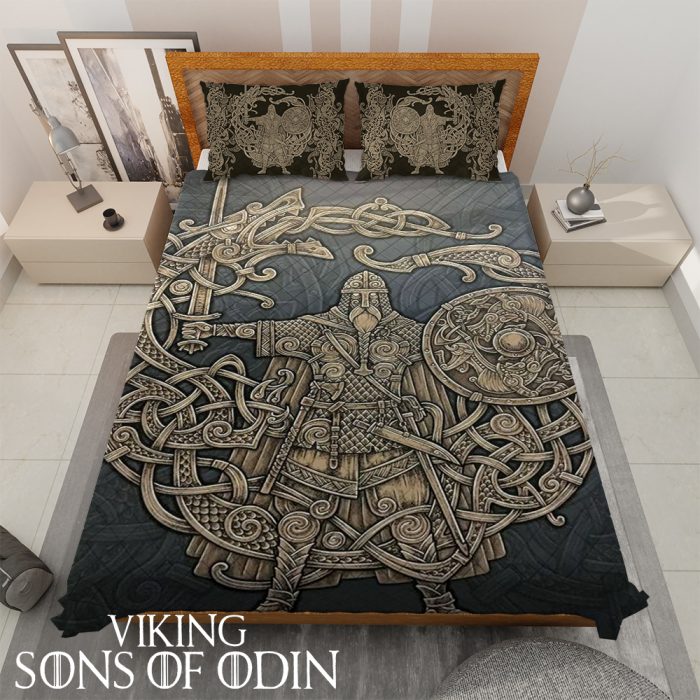Nordic Discovery, Viking
Battle of Tettenhall
On 2 August 910, the Battle of Tettenhall occurred near Tettenhall or Wednesfield in present-day Wolverhampton. This battle was fought on one side by an alliance of Anglo-Saxon forces from Mercia and Wessex under the command of Æthelflæd (Old English), daughter of King Alfred the Great, wife of Lord Æthelred, lord of the region Mercia, along with her brother King Edward the Elder. They faced a mighty Viking army, no one knows how many, but it is thought to be in the thousands. The Vikings were led by a three-way alliance, King Eowils, Halfdan, and Ingwær of Danelaw (United Kingdom of Northern Ireland). To understand this battle, we must know the circumstances in which it occurred.
During the reign of King Alfred the Great, father of Æthelflæds and Edward, a treaty was signed between the Anglo-Saxons and the invading Viking army following the Anglo-Saxon victory at the Battle of Eddington. The treaty was signed creating the territory of Danelaw, under the control of the Danish Vikings and Anglo-Saxon kingdom with King Alfred at the head, consisting of two territories, Mercia and Wessex. The Anglo-Saxon alliances were forged when King Alfred married his eldest daughter Æthelflæd to Æthelred, Lord of Mercia. For the rest of his life, King Alfred succeeded in keeping the Vikings at bay in Middle-earth and preventing them from pillaging the southern regions. But soon, King Alfred the Great died in 899 and his son Edward the Elder became king of the Anglo-Saxons, with his sister Æthelflæd and brother-in-law Æthelred ruling the region of Mercia. The military alliance between Wessex and Mercia became a formidable force holding back the Vikings in Danelaw.
In 909, Æthelflæd and her husband Æthelred sent the Mercian army to march deep into Danelaw territory, to Northumbria and especially to Lindsey territory. In the Lindsey territory is Bardney Abbey, which houses the remains of Saint Oswald, King of Northumbria. This five-week campaign deep into Viking territory aims to retrieve the relics of Saint Oswald and bring it back to the reconstructed Gloucester city. When the Mercian army returned, they placed the relic of Saint Oswald in the Great Synagogue in Gloucester. The Vikings were furious that the Anglo-Saxons had entered their territory without notice. So in the year 910, the Vikings retaliated by the 3 Viking kings, Eowils, Halfdan and Ingwær, assembling a large army and marching. The Vikings boarded a boat down the Severn River to invade Mercia territory. When the Viking army arrived, they plundered, destroying all the villages along their way. Mercia was filled with smoke, fire, blood, and corpses. The Vikings, fearing being trapped in enemy territory, decided to head north back to Danelaw with the spoils. But now the Wessex army led by King Edward the Elder and the Mercian army led by Æthelflæd decided to take down the Vikings at Tettenhall. The details of the battle are more or less lost but it is a traditional medieval battle where wall formations face off wall formations, where people rush to kill each other, death and blood everywhere. everywhere. Swords, spears, daggers, hammers, maces were swung, and screams were heard everywhere. The Vikings seem to have been trapped by the Anglo-Saxons and the bloody battle turned into a massacre. But after hours of fighting, the Anglo-Saxons were victorious and, as the Anglo-Saxon Chronicle says, “many thousands” were killed, mostly Vikings, including at least two Viking Kings. if not all.
The Battle of Tettenhall subdued the Danish Norse, and it was the last major attack by the Danish Vikings into Anglo-Saxon territory. With the mighty Vikings of the North now dead or subjugated to the Anglo-Saxons under King Edward the Elder and his sister Æthelflæd, who would later become Lady of Mercia after Lord Æthelred dead, can now focus on the Vikings of Middle-earth and the Eastern region. They would soon attack the Vikings again with Æthelflæd and the Mercian army attacking Derby and Leicester in mid-earth, while King Edward and the Wessex army attacked Essex and East Anglia. The process of unifying the kingdoms into a unified country called Great Britain has begun, the great vision of King Alfred the Great will soon be realized. The Battle of Tettenhall laid the foundations for the conquest of the Viking lands of Middle-earth and the East, and under King Æthelstan Æthelflæds’ adopted son and King Alfred’s grandson, England would finally be unified.






















